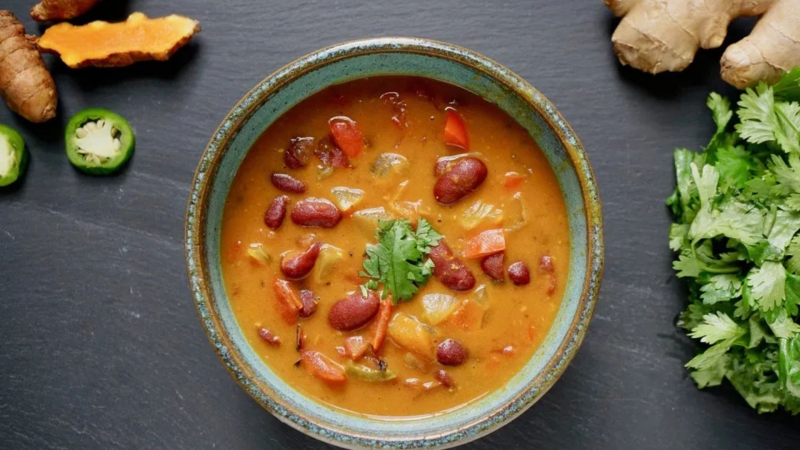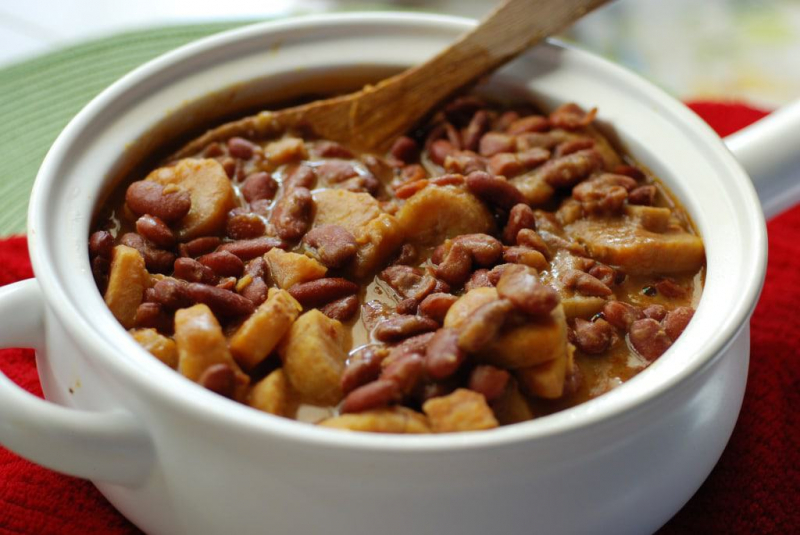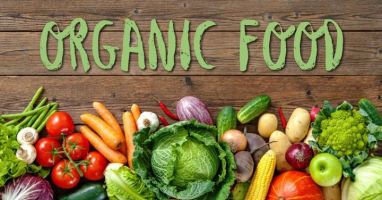Top 9 Best Burundian Food Recipes
Burundi's East African country contains some of the most fascinating mountains, agricultural fields, and savannas, making it worthwhile to visit. However, if ... read more...you ever visit this country, make sure to sample its cuisine and landscapes because it has some delectable foods. Toplist has compiled the Top 9 Best Burundian Dishes and their recipes in this article for those of you who want to cook these dishes at home.
-
Ibiharage is a delectable bean stew. White beans are commonly used by locals; however, white beans are also popular among a few locals. In addition to onions, garlic, mixed spices, oil, and salt, the recipe calls for onions, garlic, mixed spices, oil, and salt. It is both healthy and delicious, and you should not pass it up. This food is praised by both locals and visitors.
Ingredients:
- 12 ounces white navy beans
- boiling water
- 1⁄2 cup cooking oil
- 3 large onions, sliced
- 1 garlic clove, crushed
- 1 teaspoon berbere mixed spice
- 2 teaspoons salt
Direction:
- Place the beans in a large saucepan and cover with water equal to two or three times the amount of beans. Bring the water to a boil in a large pot over high heat. After two or three minutes, remove from the heat.
- Allow the beans to soak for one hour, covered. Then return to the stove and cook until the vegetables are tender.
- You can also soften the beans in a pressure cooker.
- Heat the oil in a separate pan and fry the onions until they are transparent. Stir in the garlic until it is fragrant.
- Cook for 5 minutes after adding the beans to the pot. Combine the salt and berberi spice mix in a mixing bowl. Serve right away.

Photo: Pinterest 
Photo: Food.com -
Ugali is a porridge made from cassava flour or maize flour. It is extremely simple to prepare and is one of the country's most popular cuisines. Butter and salt are also included in the recipe. Simply bring the water to a boil, then gradually add the flour while stirring constantly. When the sauce has thickened, remove it from the heat and set aside until the dish is ready. Before serving, add the butter topping.
Ingredients:
- 4 cups of finely ground cornmeal
- 8 cups water
Direction:
- In a saucepan, bring water to a boil. Pour the corn flour into the boiling water slowly. Keep lumps to a minimum.
- Continuously stir and mash any lumps that form. Add more corn flour until it reaches the consistency of mashed potatoes.
- Cook for three to four minutes, stirring constantly. (The secret to success, i.e., lump-free ugali, is to continue stirring as the ugali thickens.)
- Top with a pat of butter or margarine if desired.
- Keep warm by covering.
- Serve immediately with any meat or vegetable stew, or with any dish that includes a sauce or gravy.

Photo: USAHello Video: Telande World -
This traditional Burundian dish, known as Boko Boko harees, is a type of chicken. It is prepared with ingredients such as onion, bulgur wheat, and turmeric.
Ingredients:
- 3 1⁄3 cups bulgur wheat
- 3 chicken breasts
- 1 large onion, grated
- 1 teaspoon salt
- 3 sets chicken giblets
- 1 small onion, sliced and separated into rings
- 2 tablespoons turmeric powder
- 1⁄4 cup water
- 3 tablespoons sugar
- 5 cups water
- 6 teaspoons ghee, divided
Direction:
- Soak the bulgur wheat for 3 hours in water. Please keep in mind that bulgur wheat absorbs a lot of water, so err on the side of too much.
- Drain the wheat and combine it with the chicken breasts and enough water to cover in a pot.
- Bring to a boil, then reduce to a simmer with 1 teaspoon salt. Allow to cook for 30 minutes.
- In the meantime, cut the chicken giblets into very small pieces.
- Combine the turmeric powder and water in a small pot. Bring to a boil, then reduce to a low heat and continue to cook until a thick paste forms. Remove the pan from the heat and set aside.
- Place the giblets in a small pot and cover with a half cup of water and 3 tbsp turmeric paste. To taste, add a pinch of salt and sugar. Cook for 10 to 15 minutes, or until the giblets are tender.
- Fry the onions until crispy in the remaining ghee.
- Remove the chicken breasts from the pot and shred them before returning them to the bulgur wheat. Stir in 3 tbsp of the ghee until well combined. If the wheat is soft and the dish is the consistency of a thick dough, continue cooking until it reduces down, or add more water if necessary.
- Serve with the turmeric sauce and fried onions on the side.

Photo: Food.com Dishes around the world -
Marahagwe is a delicious bean soup or a traditional stew of various vegetables and beans. This dish is also popular in Chad, Congo, and Kenya, though it is slightly different. You'll need beans, allspice, coconut milk, potatoes, garlic cloves, tomatoes, and greens like spinach or cabbage to make marahagwe.
Ingredients:
- 1 cup dried kidney beans (soaked overnight) or 1 (15-ounce) can cooked kidney beans, drained
- 4 tablespoons olive oil
- 2 medium-sized onions, chopped
- 2 garlic cloves, chopped
- 2 tomatoes, chopped, or 1 cup canned diced tomato
- ½ cup white cabbage or spinach, shredded
- 1 bay leaf
- ½ teaspoon allspice
- 1 can (13½ ounces) coconut milk
- 2 cups diced, peeled potato (3–4 small potatoes)
- Salt and pepper to taste
Direction:
- Soak the beans in water overnight. When you're ready to cook, drain the beans and place them in a large pot. Cover with plenty of water, bring to a boil, and cook until tender (about 70 minutes). When beans are done, drain them. (If using canned beans, skip this step: drain canned beans and proceed as directed below.)
- Heat the olive oil in a pan over medium heat and fry the onions and garlic until translucent. To the onion mixture, add the beans, tomatoes, cabbage, and spices, then gradually add the coconut milk and potatoes. Bring to a low simmer and cook, stirring frequently, for 15–25 minutes, or until the potatoes are tender. If necessary, add water to keep the vegetables moist.
- With steamed rice, serve.

Photo: Edible Pioneer Valley 
Photo: Daily Dose of Greens -
Bananas and beans? Isn't this an unusual combination? This dish, on the other hand, offers a unique combination of savory and sweet flavors. It is the main course, and it is served with Burundi slaw and chapati bread.
Ingredients:
- 1 lb. dried red kidney beans
- 4 green bananas or plantains
- 2 tablespoons palm oil
- 1 onion sliced
- Salt to taste
- Hot chili pepper to taste
Direction:
- Soak the beans in plenty of water for at least 3 hours.
- Drain, place in a pan, cover with water, and cook for 40 minutes, or until tender. Drain.
- Peel and chop the bananas, then brown the onions in a pan with the oil.
- Season the beans and bananas with salt and pepper after adding them to the oil.
- Add 4 cups of water and cook until the beans are tender and the liquid has reduced to about 1 cup.
- Serve immediately and enjoy!

Photo: International Cuisine Video: Globetrotter’s Plate -
Ndizi, or, to put it simply, a plantain prepared in palm oil. Plantain is sliced before being fried in palm oil. It is simple to make and only requires three ingredients: palm oil, plantains, and salt. Ndizi can be served as a snack or as a side dish.
Ingredients:
- 2 Plantains.
- Palm oil.
- Salt.
Direction:
- Plantains should be sliced.
- Pour a little palm oil into a frying pan and heat it up. Add the plantains slices and fry them until they are slightly browned.
- Place the plantain slices on a paper towel to absorb any excess oil.
- Place the plantain slices in a dish and season with salt.

Photo: World Food Atlas 
Photo: Leite's Culinaria -
One of the locals' favorite foods is matura and mahu, a type of Burundian sausage. It is made with onions, garlic, meat, usually beef, chili pepper, salt, pepper, and other seasonings. Blood is also a required component.
Ingredients:
- 1 pound beef (deboned)
- Olive oil
- 1 Chile pepper (chopped)
- 1 bunch of spring onions
- 2 cloves of chopped garlic
- 1 bunch of coriander
- 250 grams tripe
- Salt
- Pepper
- 1 cup of blood
Direction:
- Cook your garlic and onions until they are golden brown.
- Set them aside to cool.
- While the onions cool, cut your beef into bite-sized pieces.
- Pour your blood into a bowl and combine it with your meat and sautéed onions. Season the mixture with Chile, pepper, and salt after thoroughly mixing it.
- Place your mixture in your uncooked stripe and tie both ends together.
- Cut into pieces after grilling. Serve with ugali or eat on its own.

Photo: Pinterest 
Photo: XB - Chilling with the Hommies -
This traditional Burundian dish, ndagala, is made from small local fish. It is typically used whole in cooking. Red palm oil, tomatoes, onions, habanero, and fish are used to make this cuisine. You can also add parsley to boost the flavor.
Ingredients:
- 1 Tbsp red palm oil
- 1 lb fish (we used cod)
- 1 onion, chopped
- 3 tomatoes, chopped
- 1 habenero (whole or halved)
- 1 cup water
- Salt to taste
Direction:
- Warm the oil over medium heat. Cook until the onion is soft. Then stir in the tomatoes, habanero, water, and salt.
- Cook, uncovered, for 15-30 minutes, or until the tomatoes have broken down into a light, brothy sauce. Adjust the time to your liking if you prefer a more reduced sauce – or less.
- Add the fish, cover, and cook until cooked through. This is determined by the thickness of your fish. To determine if the fish is done, check to see if it flakes easily. It took us about 15 minutes.

Photo: Twitter Video: village family in usa -
Nyama is a type of meat stew. It is also prevalent in other countries such as Zimbabwe. Beef, chicken, and goat are common meats used in this dish. It is frequently prepared during festivals and celebrations. Tomatoes, carrots, garlic cloves, curry powder, and onions are among the other ingredients.
Ingredients:
- 2 lb beef
- 4 cloves garlic , finely chopped
- 1 onion , finely chopped
- 2 tomatoes , chopped
- 1 teaspoon salt
- ½ teaspoon curry powder
- 2 carrots , diced
- 1 cup fresh green beans , cut in 1-inch/2,5cm sections
- 1 tablespoon cornstarch (optional)
- Oil (for frying)
Direction:
- Beef should be cut into medium-sized chunks. In a pot, heat the oil. Combine the beef, garlic, and salt in a mixing bowl. Fry the meat until it is a lovely brown color.
- Reduce the heat to low and add just enough water to cover the meat. Allow to gently and slowly uncovered simmer until meat is tender.
- When the water has completely evaporated, add the onions and curry powder. Cook for 2 minutes. Cook for another 3 to 4 minutes, or until the tomatoes are tender and cooked through.
- Add a splash of water, the carrots, and green beans, and continue to cook for 5 minutes, stirring frequently.

Photo: Wikipedia 
Photo: Woolworths TASTE






























